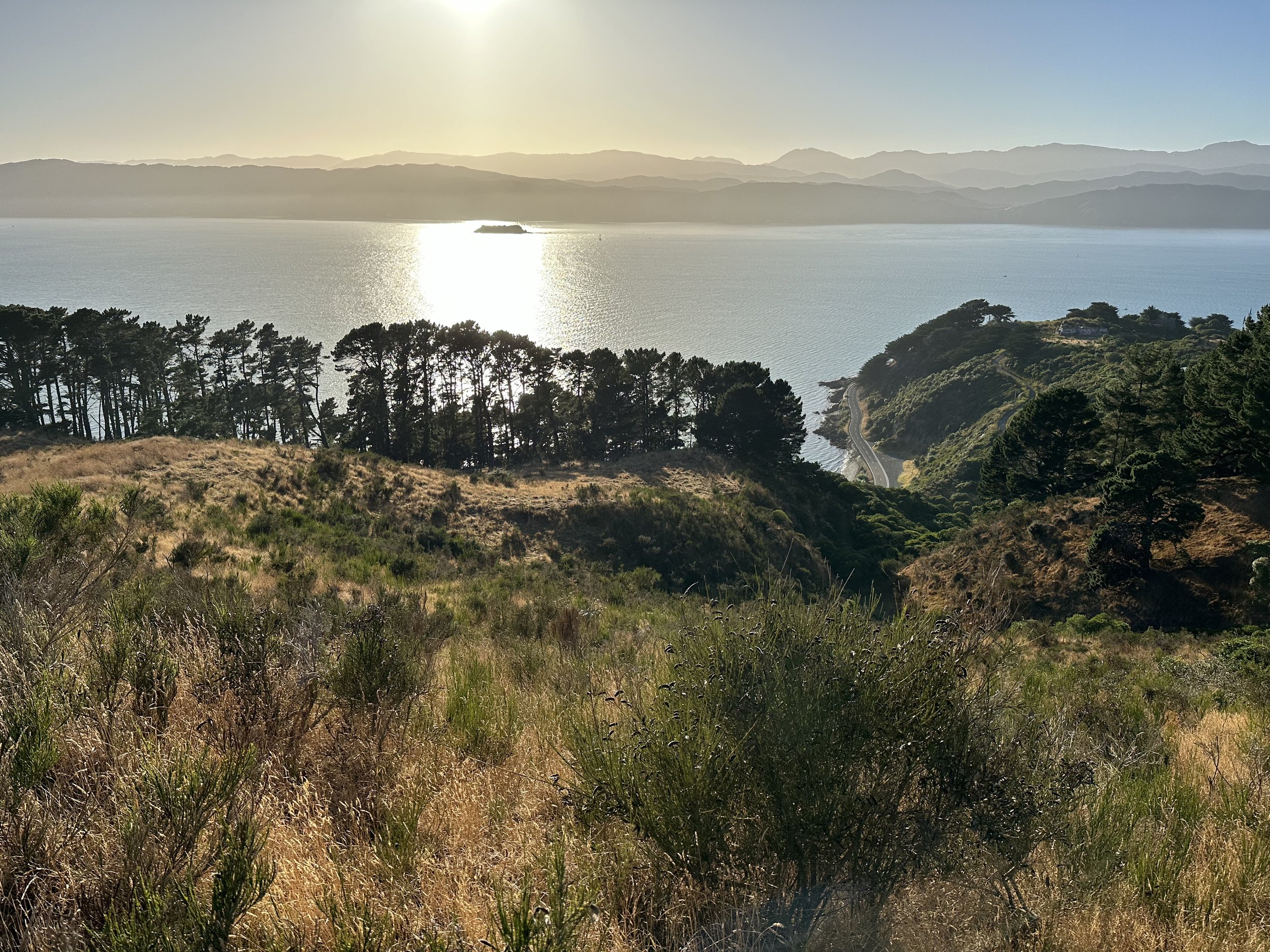
Victoria University of Wellington - Landscape Architecture Programme
An exceptional land to be protected and revealed.
Situated at the northern tip of Te Motu Kairangi (Miramar peninsula), Mātai Moana (Mt. Crawford) is an undeveloped piece of land with immense historic value. From significant Māori sites, as well as the oldest continuously operating farm in wellington, to military emplacements, the old Mt. Crawford prison and the Massey memorial. Due to its location, the area also holds a strategic ecological value. Considering its situation within Wellington harbour, and its cultural, ecological, and social value, Mātai Moana presents an exceptional opportunity for Wellington City.
An inclusive landscape-based vision for Mātai Moana
The landscape architecture programme of Te Herenga Waka / Victoria University of Wellington has been working on a participatory design project at Mātai Moana that proposes the transformation of the area into a new Ecosanctuary and Heritage Reserve. The idea of the project has been to use the expertise of VUW/LAND 411/2024 students and staff to run a participatory project with the local community, where different voices with different interests and backgrounds have been heard and considered.
Many individuals as well as representatives from mana whenua and more than 20 different community groups have participated in a series of lectures, seminars, workshops and reviews. The goal has been to collectively design different Master Plans for the whole area, as well as a wide range of site-specific interventions to gradually transform Mātai Moana.
Facilitating a gradual transformation of the site
The designs aim to be grounded on site knowledge, Mātauranga Māori and community aspirations. The goals of the project have been to: 1) conceive an unfenced ecosanctuary, integrating community efforts as part of a 30 years restoration project; 2) integrate in the reserve physically existing heritage, but also removed heritage, intangible heritage, and memories; and 3) create a public identity and sense of belonging through engagement with biodiversity and cultural heritage.
The key areas that have been included in the project are: the coastal road; the Māori heritage sites; the military sites; Mt. Crawford prison; Shelly Bay; the existing farm; the prison gardens, Massey memorial; viewing sites; and educational/experiential spots.
Continuing a deliberative process towards land restoration
The exhibition will tour through three different venues during June and July 2024 to facilitate dissemination and maximise impact and support to the project. Two venues based in Miramar peninsula (Miramar Community Centre and Worser Bay Lifesaving Club), and a third one in Te Aro (Urban Dream Brokerage). Visitors will be able to provide feedback on the different designs using analogue and digital mediums. The public will be able to see the designs online and provide feedback through the website: https://www.toi.agency/vuw-soa. The ending goal will be to produce a consensus design to inform land protection and a gradual transformation of the area.
